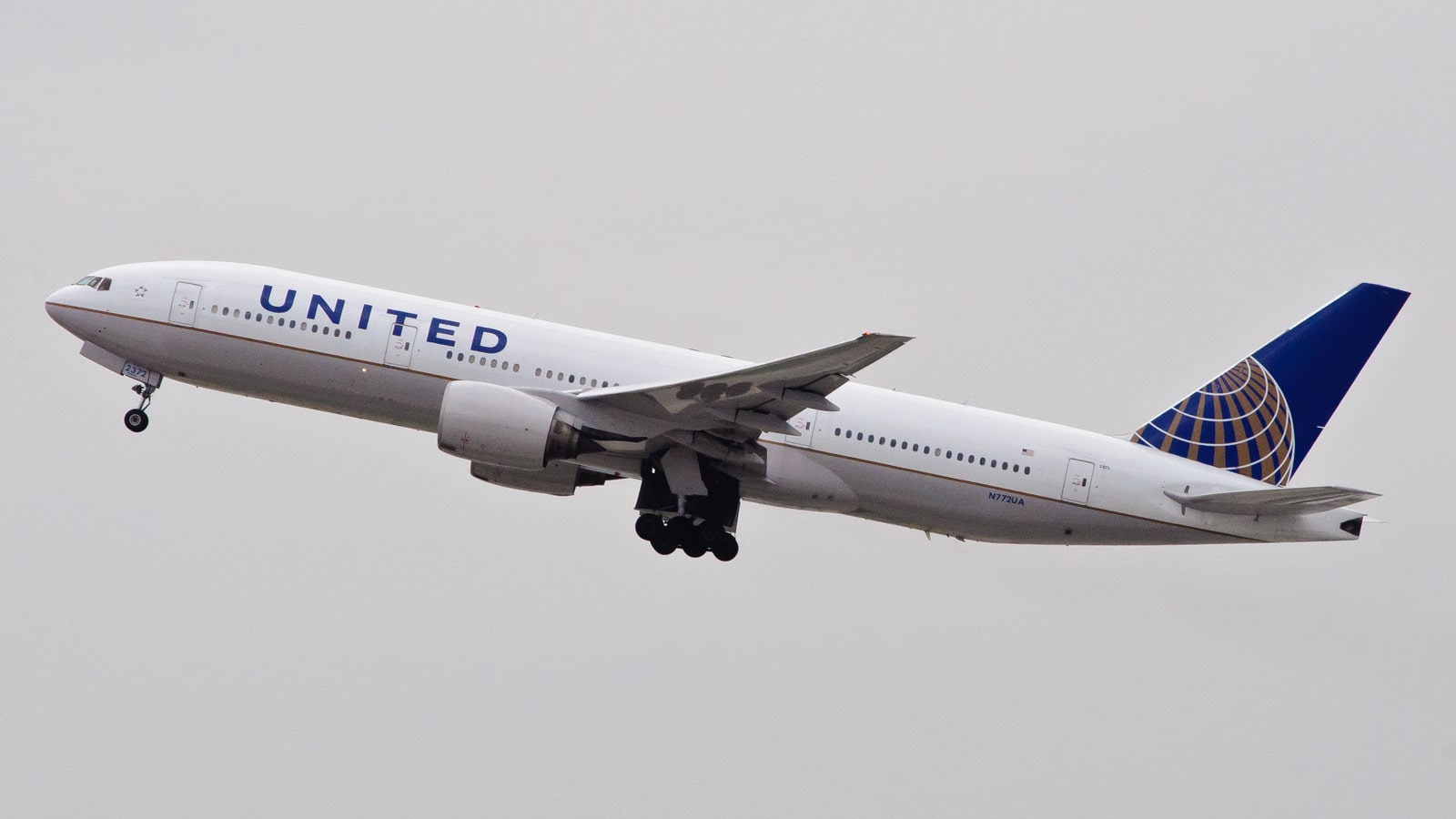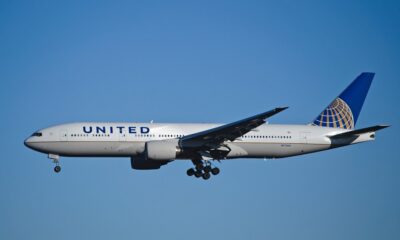Airlines
United Airlines to Pay $305,000 Buddhist pilot to Settle EEOC Religious Discrimination Lawsuit
Airline Agrees to Accommodate Buddhist Pilot’s Religious Beliefs

NEW YORK – United Airlines will pay $305,000 to a Buddhist pilot and will provide other relief to settle a religious discrimination lawsuit filed by the U.S. Equal Employment Opportunity Commission (EEOC), the federal agency announced today.
American Airlines to pay $7.5M in class action settlement over bag fees(Opens in a new browser tab)
According to the EEOC’s lawsuit, the pilot was diagnosed with alcohol dependency and lost the medical certificate issued by the Federal Aviation Administration (FAA). One of the requirements of United’s HIMS program for its pilots with substance abuse problems who want to obtain new medical certificates from the FAA is that pilots regularly attend Alcoholics Anonymous (AA). The pilot, who is Buddhist, objected to the religious content of AA and sought to substitute regular attendance at a Buddhism-based peer support group. United refused to accommodate his religious objection and, as a result, the pilot was unable to obtain a new FAA medical certificate permitting him to fly again, the agency charged.
This alleged conduct violates Title VII of the Civil Rights Act of 1964, which prohibits discrimination based on religion. Under Title VII, employers must make a reasonable accommodation for an employee’s sincerely held religious beliefs, so long as doing so does not impose an undue hardship on the employer’s business. The EEOC filed suit in U.S. District Court for the District of New Jersey (EEOC v. United Airlines Inc., Civil Action No. 20-cv-9110) after first attempting to reach a pre-litigation settlement through its conciliation process. The case was litigated by EEOC Trial Attorney Sebastian Riccardi, supervised by Supervisory Trial Attorney Sara Smolik.
Under the consent decree that resolves the lawsuit, United will pay the pilot $305,000 in back pay and damages and will reinstate him into its HIMS Program while allowing him to attend a non-12-step peer recovery program. The company will also accept religious accommodation requests in its HIMS Program going forward, institute a new policy on religious accommodations, and train its employees.
“Employers have the affirmative obligation to modify their policies to accommodate employee’s religious beliefs,” said EEOC New York Regional Attorney Jeffrey Burstein. “If they require their employees to attend AA as part of a rehabilitation program, they must make sure that they allow for alternatives for their employees who have religious objections to AA.”
Acting EEOC New York District Director Timothy Riera added, “We are pleased that United will now accommodate its pilots who have religion-based objections to mandatory AA attendance.”
The EEOC’s New York District Office is responsible for processing discrimination charges and the conduct of agency litigation in New York, northern New Jersey, Connecticut, Massachusetts, Rhode Island, Vermont, New Hampshire, and Maine.

Airlines
A software error caused grounding the entire airline fleet

On Wednesday, the U.S. Federal Aviation Administration (FAA) issued a ground stop advisory for all Alaska Airlines and subcarrier flights due to a software issue, disrupting travel plans for passengers.
The FAA directive, which prohibited the departure of Alaska Airlines mainline and subcarrier flights, was implemented as a precautionary measure following the detection of the software problem. The ground stop was initiated after Alaska Airlines encountered difficulties during a system upgrade related to the calculation of weight and balance for their flights.
As a result, the airline opted for a temporary suspension of all its operations to address the issue and ensure passenger safety. Alaska Airlines promptly issued a statement acknowledging the incident and expressing their commitment to resolving the matter swiftly. “This morning we experienced an issue while performing an upgrade to the system that calculates our weight and balance.
Out of an abundance of caution, we requested a ground stop for all Alaska and Horizon flights, which was instituted at approximately 7:30 a.m. PT,” the statement read. Passengers affected by the disruption voiced their concerns on social media platforms, prompting Alaska Airlines to reassure them of their efforts to minimize the inconvenience and expedite the resumption of flights.
Following approximately an hour-long interruption, the FAA lifted the ground stop order, allowing Alaska Airlines and its subcarriers to resume normal operations. However, it was clarified that SkyWest, which provides regional service for Alaska Airlines and other carriers, was exempt from the ground stop and continued its flights unaffected.
Aerospace
Which is bigger 777x or 787 aircraft ?

The 777X is a new series of the Boeing 777 family and is designed to be larger and more efficient than its predecessor. It features two variants: the 777-8 and the 777-9, being the larger of the two.
The Boeing 777X emerges as the larger sibling within the Boeing family, representing a significant leap forward in both size and efficiency. Comprising two variants, the 777-8 and the 777-9, the latter takes the crown as the larger of the two. With its expansive fuselage and impressive wingspan, the 777X is tailored for long-range journeys and boasts a substantial passenger capacity.
On the other hand, the Boeing 787, affectionately known as the Dreamliner, occupies a niche in the market as a smaller yet formidable aircraft designed for medium to long-range flights. Its distinguishing feature lies in its composite fuselage, a technological marvel that renders it lighter and more fuel-efficient compared to conventional aluminum counterparts. The Boeing 777X is larger than the Boeing 787 aircraft.
When it comes to passenger capacity, the 777-9 reigns supreme, typically accommodating a sizeable contingent of 400-425 passengers in its standard configuration. In contrast, the 787, with its more modest dimensions, typically carries between 240-290 passengers, depending on the variant and layout.
One of the remarkable innovations introduced with the 777X is its folding wingtips, a feature designed to address the logistical challenges of accommodating such a large aircraft in conventional airport gates. These folding wingtips enable the 777X to retract its wings, allowing it to fit into gates designed for smaller aircraft while still reaping the benefits of an extended wingspan during flight, thereby enhancing fuel efficiency and operational flexibility
Airlines
Why Don’t Airplanes Fly Over the Pacific Ocean?

Flights do indeed fly over the Pacific Ocean, but the routes they take are often determined by factors such as airline policies, air traffic control decisions, and weather conditions. The Pacific Ocean is one of the largest bodies of water on Earth, and it’s regularly crossed by numerous flights traveling between North America, Asia, Australia, and other destinations.
However, some specific routes might avoid flying directly over certain parts of the Pacific Ocean for various reasons. For example:
- Safety and emergency considerations: While modern aircraft are equipped with advanced safety features, airlines, and pilots may prefer routes that keep them closer to potential diversion airports or within range of search and rescue facilities in case of emergencies.
- Air traffic control restrictions: Airspace management authorities may impose certain restrictions or preferred routes for managing air traffic efficiently. These restrictions could be based on factors such as military operations, airspace congestion, or diplomatic considerations.
- Weather conditions: Pilots and airlines consider weather patterns when planning routes. While the Pacific Ocean generally experiences fewer weather-related disruptions compared to other regions, factors like turbulence, thunderstorms, or tropical cyclones can influence route selection.
- Managing Cost Factors: In route planning, airlines have to take fuel prices, maintenance costs, crew charges, and other operating costs into account. Direct routes over the Pacific Ocean may be more cost-effective for shorter distances, but they may also necessitate extra safety precautions, including carrying more fuel for longer overwater operations.
- Remote Locations and Navigational Challenges: The Pacific Ocean’s vastness poses navigational issues, particularly for aircraft operating over isolated regions with few ground-based navigational aids. For precise positioning and route direction, pilots must mostly rely on satellite-based technology and onboard navigation systems, which may necessitate additional training and equipment purchases.
- Lack of Suitable Landing Options in the Pacific Ocean: Unlike regions with dense air traffic and numerous airports, the Pacific Ocean has vast stretches of open water with few suitable landing options in case of emergencies. While long-range aircraft are equipped with safety features like life rafts and emergency locator transmitters, the lack of nearby airports can increase the time it takes for rescue and recovery operations to reach distressed aircraft, posing additional risks to passengers and crew. Therefore, flight routes may be planned to ensure proximity to potential diversion airports or alternate landing sites in case of unforeseen circumstances.
























